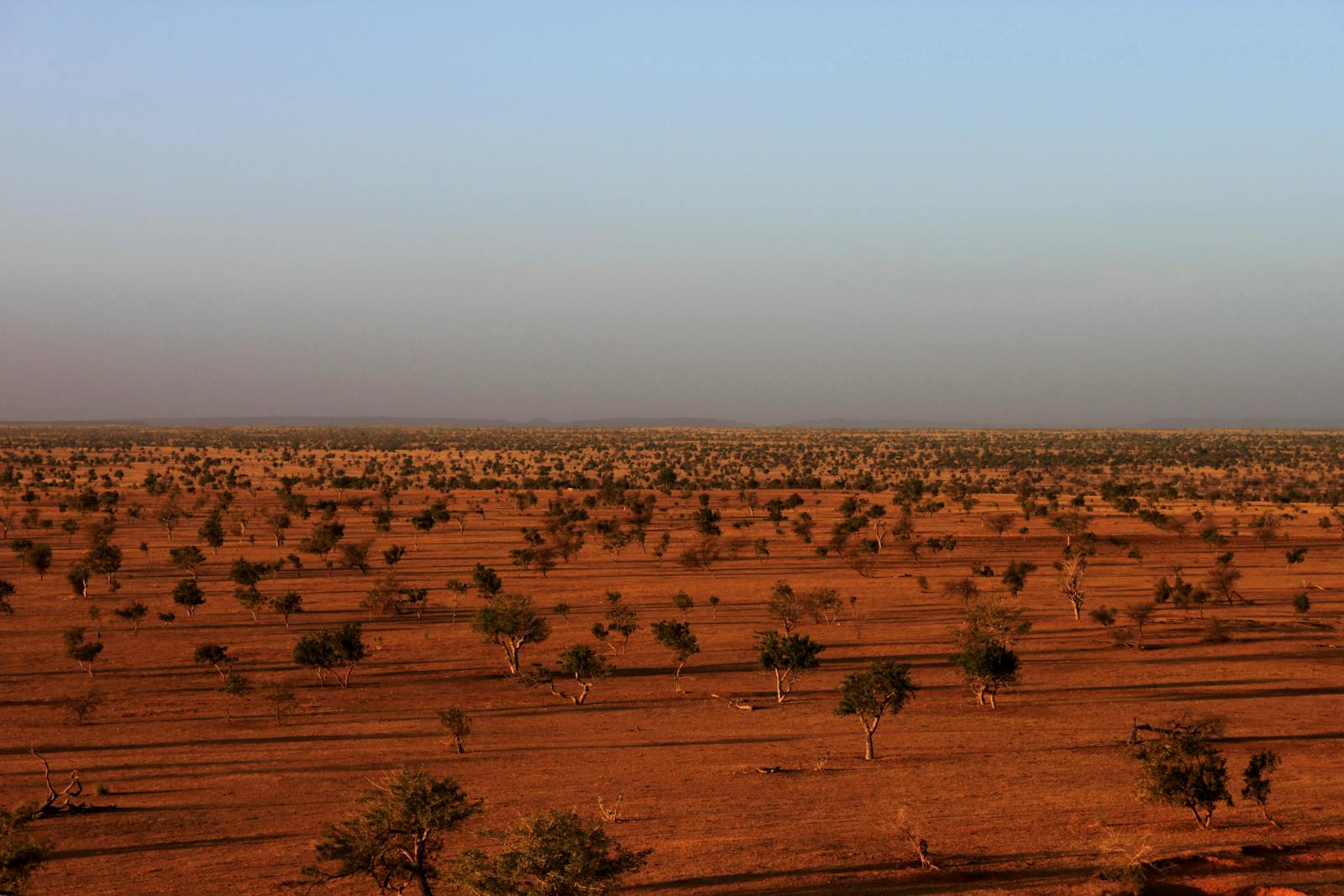Sahelian Acacia Savanna
The ecoregion’s land area is provided in units of 1,000 hectares. The protection goal is the Global Safety Net (GSN1) area for the given ecoregion. The protection level indicates the percentage of the GSN goal that is currently protected on a scale of 0-10.
Bioregion: Sahel Acacia Savannas (AT23)
Realm: Afrotropics
Ecoregion Size (1000 ha):
368,992
Ecoregion ID:
53
Conservation Target:
27%
Protection Level:
4
States: Senegal, Mauritania, Mali, Niger, Nigeria, Cameroon, Chad, Central African Republic, Sudan, Eritrea, Ethiopia, Burkino Faso
Signalled by the onset of pronounced dry season, the northern most population of African elephants complete an incredible annual migration of over 600 km from Mali to Burkina Faso and back across the Northern Congolian Forest-Savanna ecoregion. In the past, there were many more major migrations of large mammals, as well as the annual passage of large numbers of migrant birds on the Afrotropical-Palaearctic flyway and intra-African migration of birds and bats. Many of these migrations have virtually ceased now, mainly because wildlife populations have been decimated by hunting.
%2C%20also%20known%20as%20the%20sulcata%20tortoise.%20dreamstime_xxl_56698896%20(1).jpg)
The flagship species of the Sahelian Acacia Savanna ecoregion is the African spurred tortoise. Image credit: Creative Commons
The ecoregion stretches across Africa from northern Senegal and Mauritania on the Atlantic coast to Sudan and Eritrea on the Red Sea. Commonly referred to as the ‘Sahel’—this ecoregion comprises a grassland-dominated transition zone between savanna woodlands to the south and the Sahara Desert to the north. The Sahelian climate is tropical, hot, and strongly seasonal.
The monthly mean maximum temperatures vary from 33° to 36°C and monthly mean minimum temperatures are between 18° to 21°C. Large average variations in precipitation are characteristic, with frequent droughts. Average annual rainfall is around 600 mm in the south, but declines to around 200 mm in the north. The soils of the ecoregion are mainly sandy and highly permeable, so that permanent surface water is rare.
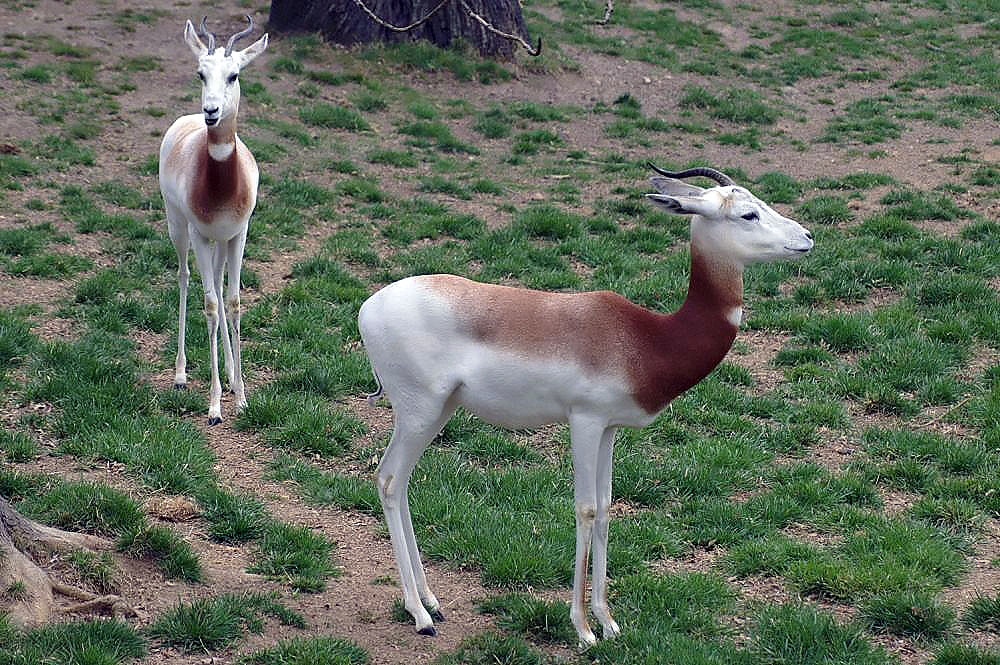
Dama gazelle. Image credit: Courtesy of David J Stang
Wooded grassland is widespread on sandy soils in the southern Sahel, with many thorny shrubs and small trees, including many Acacia and several Ziziphus species, Commiphora Africana, Balanites aegyptiaca, and Boscia senegalensis. Grass cover is continuous but often dominated by short snnual species such as Aristida mutabilis, Chloris prieurii, and Cenchrus biflorus. In the northern Sahel, short grasslands grow on deep, sandy soils, with widely dispersed shrubs of Acacia spp., Boscia senegalensis, and Calotropis procera.
The ecoregion falls mainly within the Sahelian regional transition zone, although part of its southern margin lies within the Sudanian regional centre of endemism. The savanna is not especially species-rich. However, there are a number of endemic plants, most being widespread and common, such as Indigofera senegalensis and Panicum laetum, but others are highly localized and rare, such as Andrachne gruveli and Barleria schmittii.
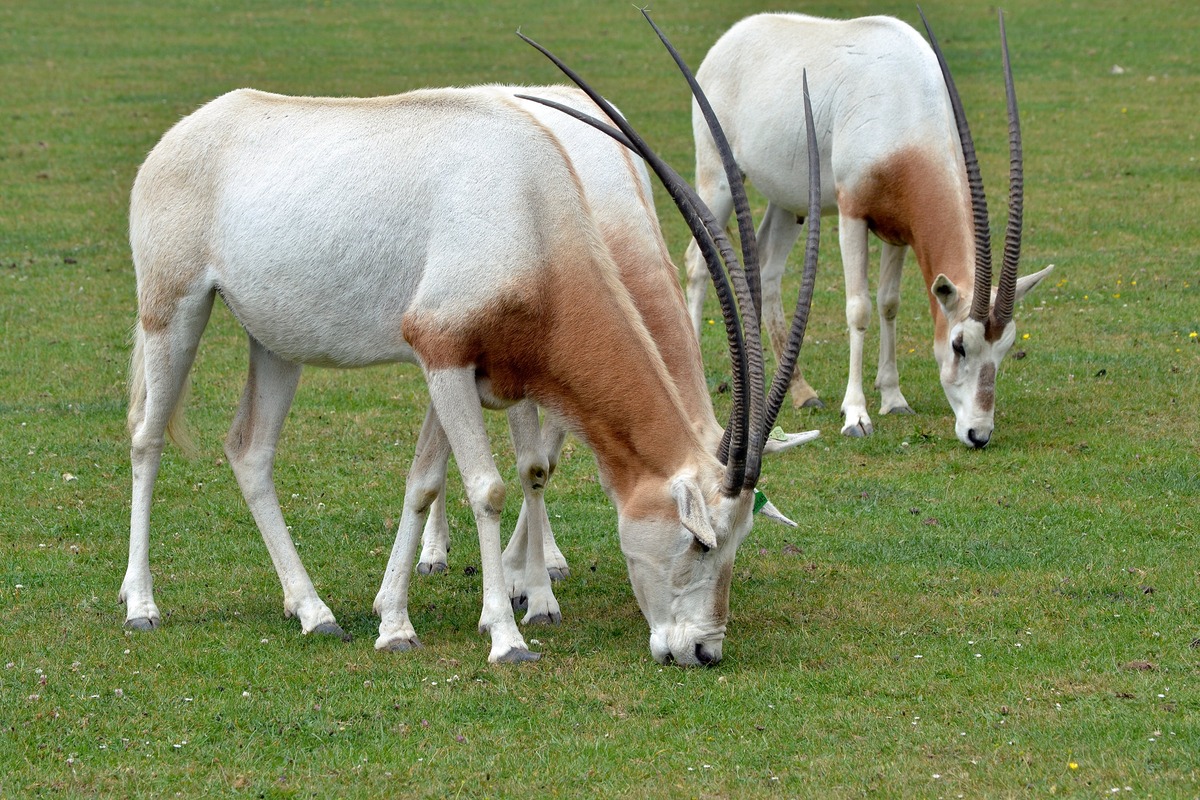
Scimitar oryx. Image credit: Creative Commons
The ecoregion is also a center of endemism for the genus Gerbil in the highlands of western Sudan, where four endemic gerbils occur (Botta’s, Darfur, Sudan, and Khartoum Gerbil). For reptiles, ten species are regarded as strictly endemic, of which the only species of conservation concern is the African spurred tortoise which is extirpated in Cameroon and is very rare in Nigeria.
Prior to the twentieth century, vast herds of ungulates and other large animals, including elephant, giraffe, and ostrich occurred in numbers rivaling or surpassing those found presently in eastern and southern Africa. Most of the large animal populations have been reduced to scattered remnants due to a century of virtually unregulated hunting with modern firearms and vehicles. Dama gazelle, dorcas gazelle, red-fronted gazelle, western giraffe, and ostrich are now found in a handful of protected areas, mainly in the central Sahel.
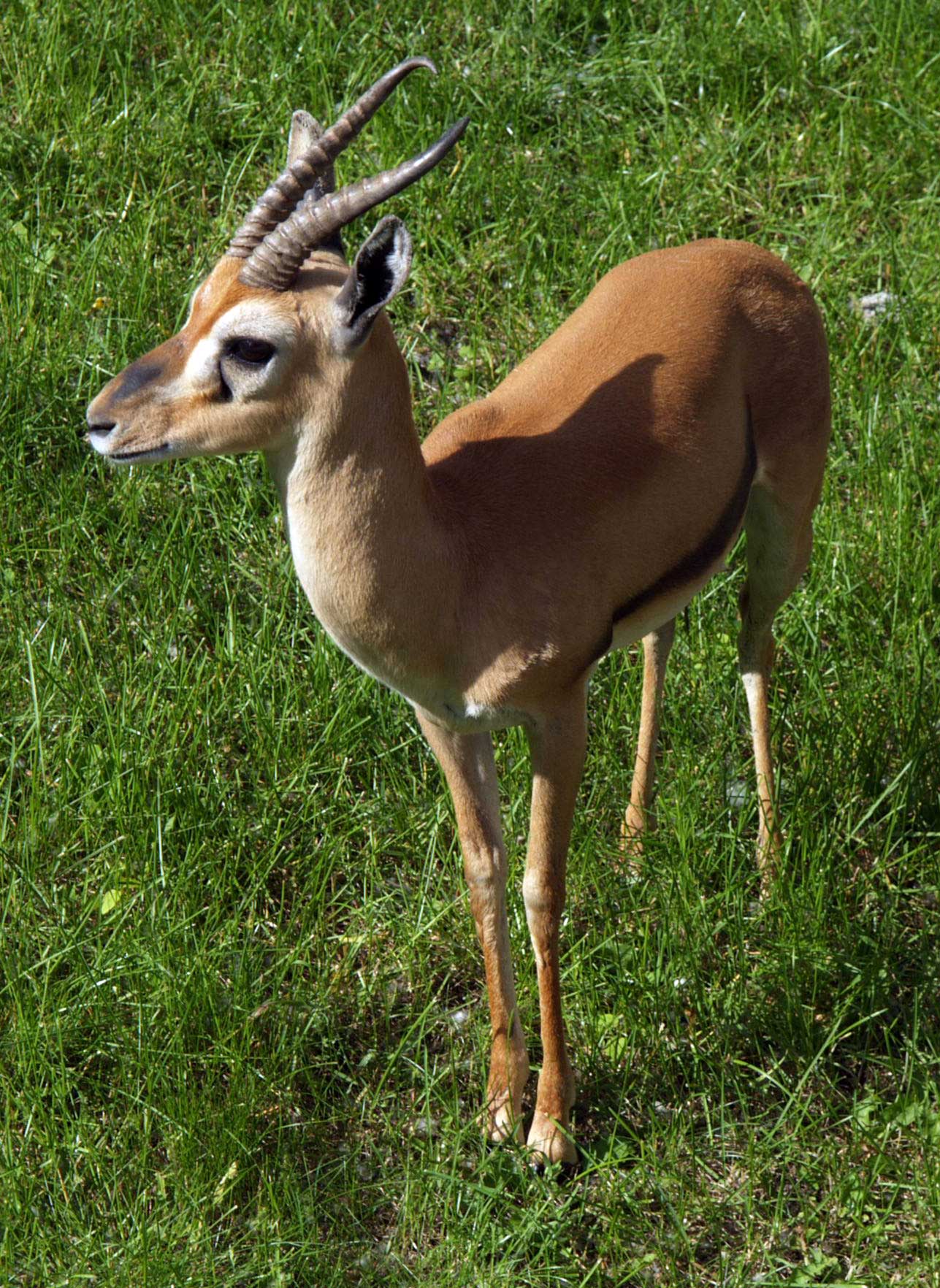
Red-fronted gazelle. Image credit: C-Andzej Barabasz, Creative Commons
There are no Sahelian protected areas in Sudan despite the relatively high level of endemicity. Important protected areas include: Tadres Nature Reserve, Niger; Sahel Partial Faunal Reserve, Burkina Faso; Gash-Setit Wildlife Reserve, Eritrea; and Ansongo-Menaka Partial Faunal Reserve, Mali. Many important sites for migratory birds are also found, including Djoudj National Park, and four Ramsar sites, the largest of which is Lac Fitri in Chad. However, many of the protected areas are essentially non-existent on the ground.
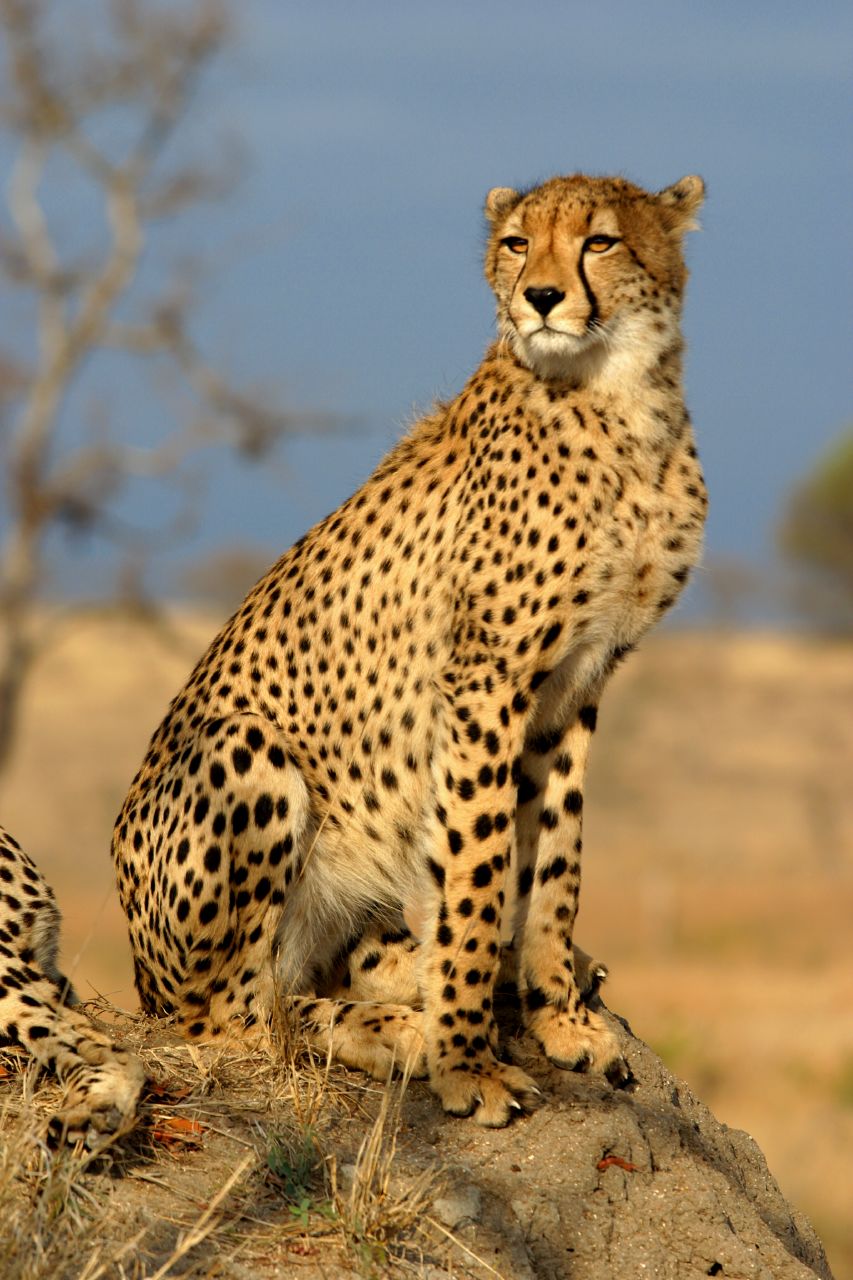
Cheetah. Image credit: James Temple, Creative Commons
The shift from native wildlife species to livestock in Sahel probably has not profoundly impacted vegetation, except around waterholes and cities, where activity may be intensive. Nearly all large animal species have been removed from this ecoregion, facilitated by modern hunting methods—automatic rifles and four-wheel drive vehicles—and exacerbated by civil disturbance, poor law enforcement, and competition for grazing and water access with domestic livestock. Hunting in protected areas is rife throughout the ecoregion; however, civil disturbance, especially in Chad, Central African Republic, and Sudan, has increased hunting in protected areas due to the weak enforcement of laws and a lack of protected area management plans.
The priority conservation actions for the next decade will be to: 1) promote sustainable livestock management to prevent overgrazing; 2) strengthen anti-poaching measures, for example, in the Gourma region in Mali; and 3) establish additional protected areas to represent all ecosystems and to create corridors between parks.
Citations
1. Burgess, N., Hales, J.A., Underwood, E., Dinerstein, E., Olson, D., Itoua, I., Schipper, J., Ricketts, T. and Newman, K. 2004. Terrestrial ecoregions of Africa and Madagascar: a conservation assessment. Island Press.
2. Ministry of Environment, Natural Resources and Physical Development. 2015. National Biodiversity Strategy and Action Plan 2015-2020. Sudan: Republic of Sudan.
3. Darwin Initiative. 2014. Darwin Initiative Annual Report: Developing long-term stakeholder capacity for elephant conservation in Mali. [Online]. [Accessed 20 February 2018]. Available from: http://www.darwininitiative.org.uk/documents/19010/23534/19-010%20AR2%20-%20Edited.pdf
4. Mallon, D.P., Hoffmann, M., Grainger, M.J., Hibert, F., van Vliet, N. and McGowan, P.J.K. 2015. An IUCN situation analysis of terrestrial and freshwater fauna in West and Central Africa. Occasional Paper of the IUCN Species Survival Commission No. 54. Gland, Switzerland and Cambridge, UK: IUCN.
